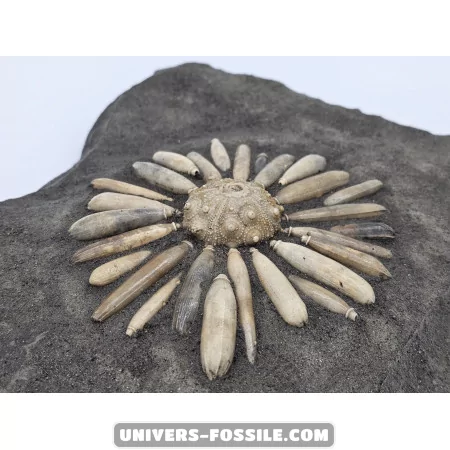Sea Urchin Pseudocidaris mammosa - Fossil Importance and Evolutionary Significance

Sea Urchin Pseudocidaris mammosa
The fossilized sea urchin Pseudocidaris mammosa is an extinct species of sea urchin that lived millions of years ago. This particular species is known for its distinctive features and its contribution to our understanding of the evolution of marine organisms.
Pseudocidaris mammosa was a medium-sized sea urchin with a globular body covered in spines. What particularly distinguished it were its nipple-shaped tubercles adorning its shell, hence its specific name "mammosa". These tubercles were arranged in a regular pattern on the surface of the sea urchin, giving it a unique appearance among its peers.
Habitat and Distribution
Fossils of Pseudocidaris mammosa have been found in various regions around the world, including Europe, North America, and Asia. It is believed that these sea urchins inhabited shallow marine environments, likely on rocky or sandy seabeds.
Lifestyle
Like most sea urchins, Pseudocidaris mammosa was probably an herbivore, feeding on algae and other organic matter found on the seafloor. Its spines and tubercles served as protection against potential predators as well as for locomotion on the marine habitat.
Sea Urchin Pseudocidaris mammosa
Echinoderms are fascinating marine creatures that have left behind valuable fossils for study. The Pseudocidaris mammosa, an extinct species of sea urchin, holds significant importance in the realm of paleontology and geology.
Fossil Importance
Fossils of Pseudocidaris mammosa have been of great importance to paleontologists and geologists in their study of the evolution of marine organisms. By examining the anatomical features of these fossils and comparing them to other species of sea urchins, scientists have been able to gain a better understanding of the evolutionary relationships between different families of sea urchins and their adaptation to different marine environments over geological time.
Conclusion
Pseudocidaris mammosa is a fascinating example of an extinct species of sea urchin that has contributed to our understanding of the evolution of marine life. Its distinctive features and geographical distribution make it a valuable subject of study for scientists interested in the history of life on Earth. By examining fossils of Pseudocidaris mammosa and other ancient species, we can learn more about the evolutionary processes that have shaped the marine biodiversity we know today.
